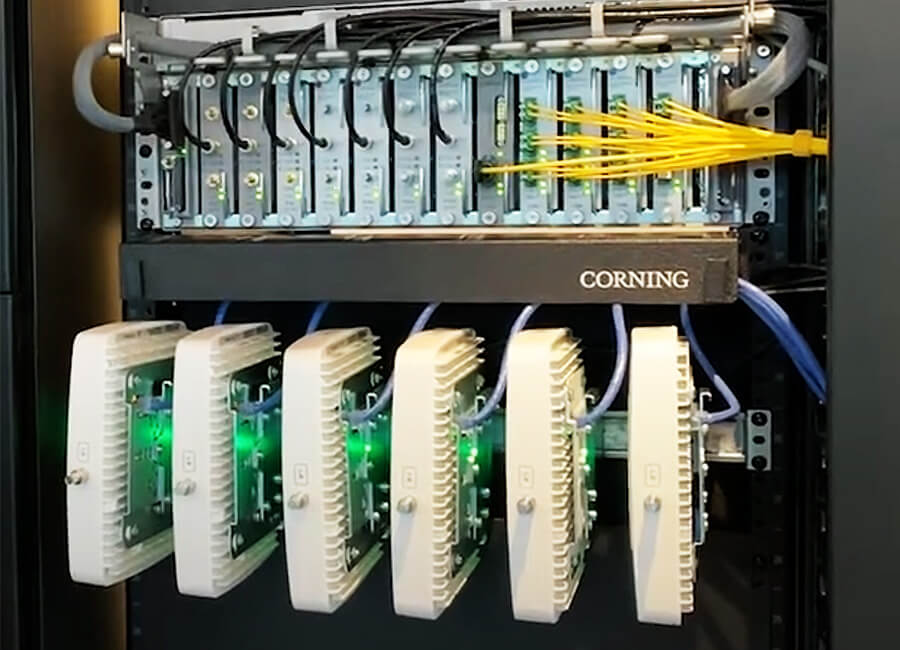July 17, 2022 | By Abel Mayal
Airspan had a bumper night at the Small Cell Awards 2022, taking home three awards and capping off a fifth consecutive year of being recognized for innovation.
The categories Airspan won were:
- Excellence in Commercial Deployment by a Mobile Network Operator, for Rakuten Mobile’s network densification deployments, which featured Airspan solutions.
- Excellence by a Private Network Operator, for our 5G Starter Kit / Network in a Box, alongside Druid Software.
- Outstanding Contribution to a New Small Cell Business Case, for Betacom’s 5G as a Service, which is powered by Airspan’s comprehensive portfolio of innovative indoor and outdoor private wireless small cells.

Awards are always nice to win. It validates our work through market recognition. But at Airspan we also like to include them in our compass to evaluate the success of our solutions.
When we look in detail at these awards, we can evaluate how our solution portfolio fits nicely into two of our key target markets: Public and Private Networks. Both markets have different needs in terms of Radio hardware (Power, frequency, etc) but also in software (virtualization, features, SA/NSA), together with different scales.
Airspan’s success in both markets resides in the concept of architecture flexibility. This means that we have developed an intelligent software platform based on Open RAN standards (3GPP, O-RAN Alliance and SCF), which allows us to locate the software embedded in the radio (All-in-One gNB) or disaggregated (CU/DU). This flexible architecture enables a modularized concept for our radios that simplifies the development of new Radio Hardware SKUs maintaining a single branch of software for all markets.
Our intelligent software platform also scales down to the size of a SME private network, and up to a major public network like Rakuten.

Let’s delve into each award win in a bit more detail.
Small cell deployment for Rakuten Mobile
Rakuten Mobile is a pioneer in Open and Virtual RAN. In 2020, it launched the world’s first fully virtualized, cloud-native mobile network built on Open RAN standards. Many industry experts said this was impossible, but Rakuten proved that this sort of network can be deployed at scale.
Airspan has worked with Rakuten to enhance the network by integrating 4G and 5G indoor and outdoor small cells. These have improved coverage in hard-to-reach outdoor areas, boosted capacity in hot spots, and provided indoor coverage. Tens of thousands of Airspan’s radios have been deployed, being 5G mmWave outdoor and indoor products a unique flagship for the Open RAN industry.
Looking from the architecture point of view, we can see that neither mmWave nor outdoor 4G small cells benefit much from a low-level split, like O-RAN split 7.2. Therefore, a 3GPP split 2 is sufficient to meet this purpose, reducing the requirements of the transport (F1). This means that we move the L1 and L2 software into the Radio (RDU) and the CU (L3) runs on an external COTS server provided by another RAN vendor.
5G Starter Kit / Network in a Box
Interest in private networks is booming. But one of the biggest challenges in deploying them is the complexity of the integration when selecting an Open RAN architecture. Airspan’s Network in a Box aims to solve this by streamlining the whole integration process.
The idea behind this concept is to offer a fully integrated 5G SA Sub-6GHz Network including 2 x indoor radios, 2 x CPE, 5GC, Servers, Switch and Sync. Being an indoor network, a lower level split like O-RAN Alliance split 7.2 can bring superior performance thanks to features like: CoMP, CUPS, Front Haul Multiplexer,, URLLC, etc. This means that Airspan’s software (L1 High, L2/L3) will reside outside the Radio hardware (RU), running on COTS servers (CU/DU). The majority of this type of venues have already deployed 10GbE or optical fiber as their indoor transport infrastructure, which nicely fits with the transport requirements of an O-RAN split 7.2.
Powering Betacom’s 5G-as-a-Service
5G-as-a-Service is a new concept, in which the majority of the complexity of deploying and managing a private network is passed to an experienced System Integrator, like Betacom.
The RAN has to be super flexible, since it could be deployed on premises or in the cloud. RAN software has to be containerized (using kubernetes) to meet both environments. Airspan’s software is based on containers supporting different virtual splits depending on the use case, density of radios, frequency, and transport requirements.
For some scatter deployments without the need of advanced features, an all-in-one gNB (AIO gNB) will meet the requirements hosting the Element Manage System remotely or on the cloud. For high dense indoor deployments, a lower layer virtualization solution will improve the performance by managing the inter-cell interference (CoMP feature). The majority of the RAN software (L1 High, L2 and L3) will be hosted remotely on the CU and DU, with the option to be run on the Cloud.
Recently, Betacom announced its partnership with Google to accelerate the adoption of 5G-as-a-Service to provide Private Networks for factories in the U.S. (link here).
A bright future for 5G public and private networks
These three awards highlight our excitement for the future of public and private networks based on vRAN. But they also demonstrate the importance of vRAN as a new architecture in a rapidly evolving world. As companies like Rakuten build ever more ambitious networks, vRAN will help make them a scalable reality. 5G Private Networks are stealing much of the limelight, presenting an equally exciting opportunity for societal evolution and business growth.
Airspan will be there, driving both markets onwards.




